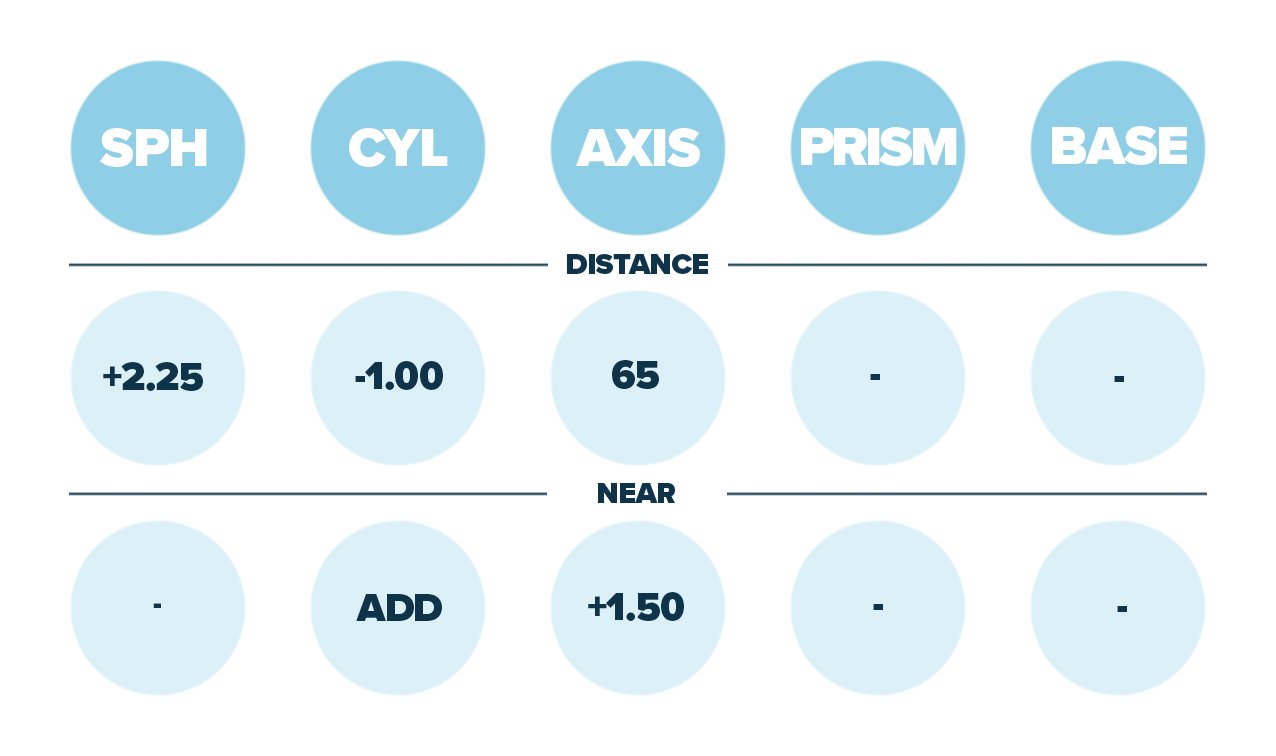
Ok, you’ve had your eye test. You’ve been told you need glasses and have been handed an eye prescription. Now what? For many of us, a prescription simply looks like a chart filled with scribbled letters and numbers which we file away somewhere and completely forget. So, what does a glasses prescription mean, why do we need one and how do we read it?
What is a glasses prescription?
A glasses prescription is issued by an optician to a patient who requires glasses to improve their vision. This can help with short-sightedness (requiring glasses to see distances far away) and long-sightedness (requiring glasses to see objects close up).
The numbers on your prescription relate to the strength of the lens you require for each eye. Sometimes these can be the same number or differ depending on the left and right eye condition. But ultimately, the higher the number, the stronger the prescription.
Why do I need a glasses prescription?
Eye prescriptions are actually very important. Not only do they monitor the health of your eye, which could benefit other health concerns, but they’re also the instructions to accurately design your required glasses lens. The information on your prescription tells the technician the current condition of your eyes and what’s required to correct your vision.
What’s included on your glasses’ prescription chart
Depending on where you have your eye test, glasses prescriptions can alter slightly. On most prescriptions, you’ll notice a chart with different words, abbreviations and numbers. Each of these signifies the condition of your eye (left and right). This information is then combined to create the lens you require. By knowing what the chart refers to, you’ll have a better understanding of your eye prescription.
What do the ‘+’ and ‘-‘ mean on my glasses prescription?
A plus or minus before a number on your glasses prescription indicates whether you are short-sighted (+) or long-sighted (-). This sits under the SPH column of your glasses’ prescription chart before the number. The higher the number, the more long or short-sighted you are.
What do the letters mean on my glasses prescription chart?
SPH
This stands for ‘sphere’ and indicates your lens strength. It also notes whether you’re long or short-sighted with a plus or minus number. The SPH number refers to dioptres, the unit used to measure the correctness within your lens.
CYL
CYL or C stands for ‘cylinder’ and links to astigmatism – a condition which indicates the shape of your cornea isn’t completely round and has an irregular curve. This means when light reaches your cornea, it doesn’t hit one spot and can cause your vision to become distorted.
Axis
This refers to the positioning of your cornea and where any astigmatism is located. It will be at this point, that the cylindrical power (CYL) should be placed within the lens. The CYL number on your glasses’ prescription also indicates the angle of your astigmatism in degrees.
Prism
The prism on your eye prescription highlights that your left and right eyes are not working effectively together. This section provides information to help correct any differences between the eyes, often reducing double vision and headaches.
Base
The BASE information tells the technician where to add the prism element to your lenses if needed. You may also see letters such as BU (base up), BD (base down), BI (base in or towards the nose) and BO (base out or towards the ear). These simply inform the technician where to add the prism.
Add
ADD is predominately used for reading glasses or the bottom half of bifocal and varifocal lenses. It indicates the power needed within the lens which allows you to see things close up. This is common for long-sightedness caused by natural ageing.
PD
This stands for Pupillary Distance and is one of the most important sections of your prescription; measuring the distance between your two pupils to help centre your lenses. Ensuring they fit correctly within your frames and provide the best vision for the wearer.
Prescriptions for your left and right eye
You’ll often find that the prescription for your left and right eye will differ. But how do you know which numbers are referring to which eye? The most obvious way to document this information is by simply using the words ‘left’ and ‘right’. However, some glasses prescriptions still use the Latin terms for ‘eye’ with the letters O.D for the right eye, O.S for the left eye or OU for both eyes.
How do I get a copy of my eye prescription?
You should be issued a prescription for your eyes straight after your eye test, which you can take away and store at home. If you lose it, don’t worry as your optician will keep a copy on file. Simply contact your opticians and request for your glasses prescription.
What to do when your prescription changes?
When your prescription changes, you need to update your glasses to match your new prescription. It’s not cost-effective to throw away your old pair of glasses and buy a new pair when your frames are in good condition. You can save money by choosing to replace the lenses in your frames, and that’s where Lensology come in!
We provide a simple and easy service that saves you money. Simply request a free postal pack that we’ll deliver straight to your door. Pop your glasses in the pack with your prescription and seal it with our prepaid postage sticker. Once we’ve received your glasses, we’ll fit them with your new prescription lenses and send them back to your ready to wear.








